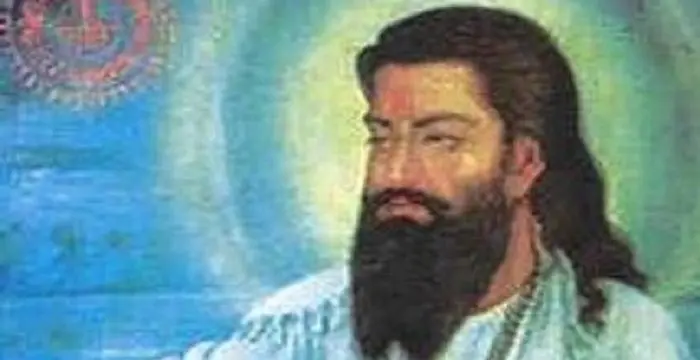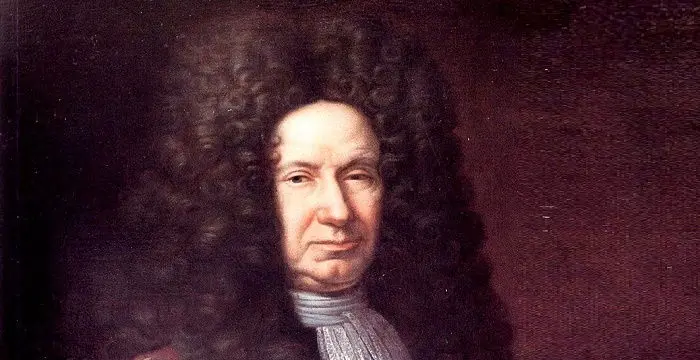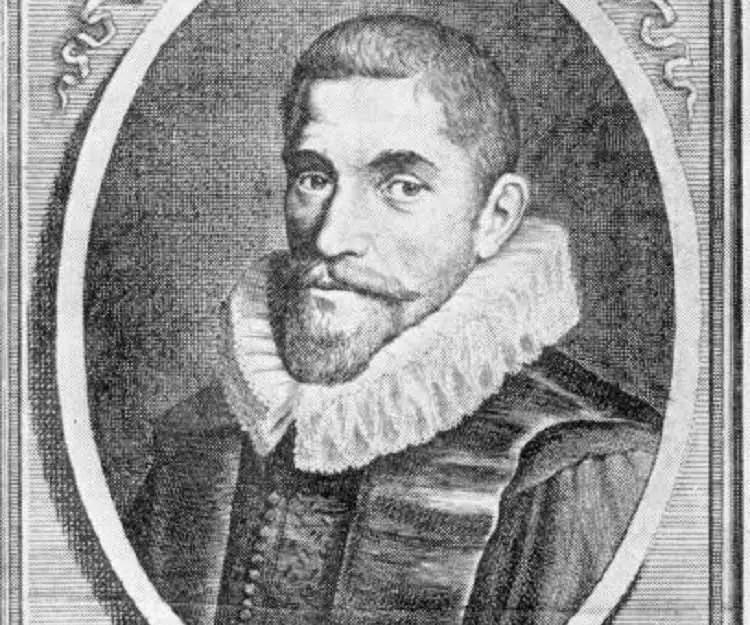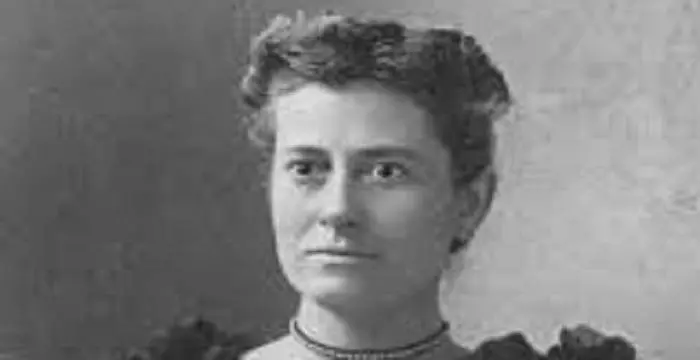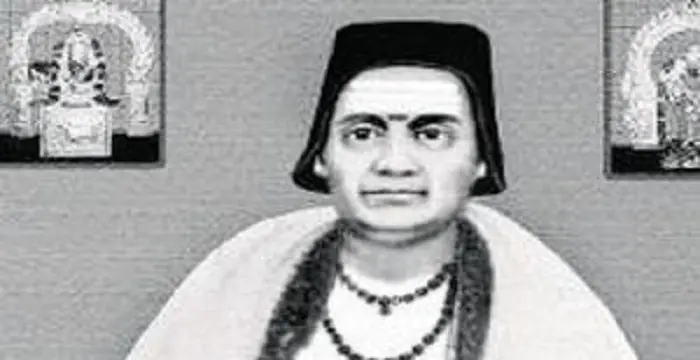
Willebrord Snell - Astronomers, Timeline and Childhood
Willebrord Snell's Personal Details
Willebrord Snel van Royen was a 17thcentury Dutch astronomer and mathematician
| Information | Detail |
|---|---|
| Birthday | June 13, 1580 |
| Died on | October 30, 1626 |
| Nationality | Dutch |
| Famous | Scientists, Mathematicians, Astronomers, Astronomers, Mathematicians |
| Universities |
|
| Discoveries / Inventions |
|
| Birth Place | Leiden, Dutch Republic |
| Gender | Male |
| Father | Rudolph Snel van Royen |
| Sun Sign | Gemini |
| Born in | Leiden, Dutch Republic |
| Famous as | Astronomer & Mathematician |
| Died at Age | 46 |
// Famous Mathematicians
Brahmagupta
Brahmagupta was a highly accomplished ancient Indian astronomer and mathematician. This biography of Brahmagupta provides detailed information about his childhood, life, achievements, works & timeline.
Giovanni Domenico Cassini
Giovanni Cassini was a 17th century Italian mathematician, astronomer and astrologer. This biography of Giovanni Cassini provides detailed information about his childhood, life, achievements, works & timeline.
Pythagoras
Pythagoras of Samos was a Greek mathematician and philosopher. Read on to learn more about Pythagoras’s profile, childhood, life and timeline.
Willebrord Snell's photo
Who is Willebrord Snell?
Willebrord Snel van Royen, also referred to as Willebrordus Snellius in most of his publications, was a 17thcentury Dutch astronomer and mathematician. Over the centuries, people recall him for one of the greatest findings in the world of science—thelaw of refraction. Until recently, it was believed that he was the proprietor of the theory; however, it was discovered that the law was actually formulated by Ibn Sahl and that Snell had only rediscovered it.Although he had originally studied law, he was a mathematical genius and made numerous contributions to the field. Snell, as he was called by the western world, brought about a major revolution when he developed a new method to calculate the mathematical function ‘Pi’, which led to tremendous development in the field of mathematics. Snell had published several of his works; the two most acknowledged and acclaimed are ‘Eratosthenes Batavus’ and ‘Tiphys Batavus’. At the peak of his career, he travelled all through Europe making more discoveries and working on several findings, especially in the field of astronomy. It was at this time that he collaborated with the best in the astronomical world, such as Johannes Kepler and Tycho Brahe.
// Famous Astronomers
Brahmagupta
Brahmagupta was a highly accomplished ancient Indian astronomer and mathematician. This biography of Brahmagupta provides detailed information about his childhood, life, achievements, works & timeline.
Giovanni Domenico Cassini
Giovanni Cassini was a 17th century Italian mathematician, astronomer and astrologer. This biography of Giovanni Cassini provides detailed information about his childhood, life, achievements, works & timeline.
Hipparchus
Hipparchus was a Greek astronomer and mathematician. This biography profiles his childhood, life, achievements and timeline.
Childhood & Early Life
Willebrord Snell was born at Leiden in Netherlands. The exact date of his birth continues to remain ambiguous to several historians. It is believed that he was born around 1580.
He was born to the successful professor of mathematics at the University of Leiden, Rudolph Snel van Royen and the affluent, Machteld Cornelisdochter, who named him after his paternal grandfather.
He was the eldest of three siblings. His brothers were Jacob, who died in 1599 at the age of 16 and the other Hendrik, who died in his childhood.
As a learned professor, Rudolph Snell ran his own private school near the university. It was in that school itself where Snell received his education. His father taught him Latin, Greek and philosophy.
Apart from this, he received no other formal education. Rudolph encouraged his son to lean towards law, but since he was greatly influenced by his father, Snell was more inclined towards mathematics. With his ardent love for the subject, he became a private student of Ludolph Van Ceulen, the renowned German mathematician.
When he came of age to attend university, his father enrolled him into the University of Leidento study law. Yet, with the passion he possessed, he soon began teaching mathematics at the university, at the age of 20, in the absence of his father. By 1600, he was both studying law and teaching mathematics at the university.
Early Career
From 1600 onwards he travelled to various European countries, mostly learning astronomy. He visited Adriaan van Roomen in Wurzburg.After spending a while there, the two mathematicians went to Prague where he was introduced to Tycho Brahe.
He also spent quite a deal of time with Brahe, assisting him in making observations and thus he gained much knowledge during this visit. The lofty knowledge attained working with Brahe ended when Brahe died in 1601. During this visit he also got to know Johannes Kepler who was Brahe's assistant at that time.
In 1603 he went to Paris where his studies of law continued but he kept in touch with numerous mathematicians, continuing to pursue findings and making observations. After this visit he gave up the study of law and returned to Leiden.
Willebrord Snell began his career assisting his father in teaching mathematics at the University of Leiden when his father’s health began to deteriorate. The duo made a wonderful pair, aiding each other as professors for several years.
Until 1609, he was not an official professor and had only taken over his father’s lectures during his ailment. Slowly he was given daily lectures in the afternoon and was also provided an additional payment for the same.
When Rudolph retired, his chair was given to his son, who hailed the opportunity as it granted him a low teaching load. This helped him to dedicate more of his time towards publishing translations, commentaries, and editions and several works of famous mathematicians.
Interest in Geometry
In 1615, Snell was drawn towards geometry and the dimensions of the earth and thus, decided to carry out a new method of finding out the radius of the planet. He concluded that by the means of ‘triangulation’ he would determine the distance of one point on the earth’s surface from the parallel latitude of another point.
He published the results of this research in a famous book, ‘Eratosthenes Batavus’ in 1617. He faced difficulty completing his work until Sterrenberg took over and finished it with his assistance. ‘Eratosthenes Batavus’ is considered one of Snell’s gifts to modern geodesy.
He was vital in the revival of the works of Apollonius on the subject of ‘plane loci’ and also of the works of Pappus. He republished the works of these two great mathematicians under the title ‘The Revived Geometry of Cutting off of a Ration and Cutting off of an Area.’ He continued to research on the works of Apollonius and published a reconstruction called ‘Apollonius Batavus
He faced a financial struggle after the death of his father. Even though he was given the chair of his father, he was not paid sufficiently for it. He received a higher salary in February 1614 but was still receiving only a third of the salary of other professors.
He was made a full professor of mathematics in February 1615 but his salary had still not seen a significant raise. Slowly, he did receive minor increments but it was onlyin 1618 that he received a salary which he considered the decent amount for his position.
Major Works
He was often rebuked for creating publications on the findings he had developed on the bases of other mathematicians’ works. Thus he decided to publish a book containing his own observations and came up with ‘Descriptio Cometae’ in 1619 that studied the movement of comets.Snell also published other works, such as ‘Tiphys Batavus’ in 1624, a work on navigational theories.
His work in mathematics enabled him to improve the method of calculating approximate values of ‘pi’ using polygons. This method, using 96-sided polygons, produce a value of pi correct to seven places, which was a revolutionary improvement to the classical method that provided only two places.
He is credited for having discovered the law of refraction in 1621, which was not published until the year 1703 in ‘Dioptrica’. It also included a manuscript with a treatise on the study of optics that helped him come up with the‘Law of Refraction.
Personal Life & Legacy
He became romantically involved with Maria de Langhe, the daughter of Janneke Symons and Laurens Adriaens de Langhe, a burgomaster of Schoonhoven, and married her in August 1608.
The two were blessed with aroundseven children. Some sources state that he had around 18 children as suggested by thestatement at his funeral oration. But this has been dismissed by several historians. Unfortunately, of the eight children that he had, only three of them survived to adulthood.
In 1626 he fell very sick from colic and reputed medical doctors were consulted. However the medication provided by them was not helping him recuperate from his illness. As a result of colic he developed a high fever which paralysed his arms and legs.
On the evening 30October 1626,the doctors visited him in order to check on his condition. Not finding any improvement, they gave him a suppository to provide him relief. Unable to move under the effect of paralysis, his servants had to lift him and take him about. That night he suddenly lost consciousness and died at the age of 46.
He was buried on the 4 November at ‘Pieterskerk’ in Leiden. Twenty of his students carried his coffin.
// Famous Astronomers
Jabir Ibn Hayyan
Jabir Ibn Hayyan was a medieval era polymath. Check out this biography to know about his life, works and achievements.
Isaac Newton
Isaac Newton was an English scientist and mathematician, who discovered gravitation and Newtonian Mechanics. Read this biography to find more on his life.
Henrietta Swan Leavitt
Henrietta Swan Leavitt was an American astronomer. Check out this biography to know about her childhood, family, personal life, discoveries, achievements, etc.
Willebrord Snell biography timelines
- // 1599He was the eldest of three siblings. His brothers were Jacob, who died in 1599 at the age of 16 and the other Hendrik, who died in his childhood.
- // 1600When he came of age to attend university, his father enrolled him into the University of Leidento study law. Yet, with the passion he possessed, he soon began teaching mathematics at the university, at the age of 20, in the absence of his father. By 1600, he was both studying law and teaching mathematics at the university.
- // 1600From 1600 onwards he travelled to various European countries, mostly learning astronomy. He visited Adriaan van Roomen in Wurzburg.After spending a while there, the two mathematicians went to Prague where he was introduced to Tycho Brahe.
- // 1603In 1603 he went to Paris where his studies of law continued but he kept in touch with numerous mathematicians, continuing to pursue findings and making observations. After this visit he gave up the study of law and returned to Leiden.
- // Aug 1608He became romantically involved with Maria de Langhe, the daughter of Janneke Symons and Laurens Adriaens de Langhe, a burgomaster of Schoonhoven, and married her in August 1608.
- // 1609Until 1609, he was not an official professor and had only taken over his father’s lectures during his ailment. Slowly he was given daily lectures in the afternoon and was also provided an additional payment for the same.
- // 1615In 1615, Snell was drawn towards geometry and the dimensions of the earth and thus, decided to carry out a new method of finding out the radius of the planet. He concluded that by the means of ‘triangulation’ he would determine the distance of one point on the earth’s surface from the parallel latitude of another point.
- // Feb 1615 To 1618He was made a full professor of mathematics in February 1615 but his salary had still not seen a significant raise. Slowly, he did receive minor increments but it was onlyin 1618 that he received a salary which he considered the decent amount for his position.
- // 1617He published the results of this research in a famous book, ‘Eratosthenes Batavus’ in 1617. He faced difficulty completing his work until Sterrenberg took over and finished it with his assistance. ‘Eratosthenes Batavus’ is considered one of Snell’s gifts to modern geodesy.
- // 1619 To 1624He was often rebuked for creating publications on the findings he had developed on the bases of other mathematicians’ works. Thus he decided to publish a book containing his own observations and came up with ‘Descriptio Cometae’ in 1619 that studied the movement of comets.Snell also published other works, such as ‘Tiphys Batavus’ in 1624, a work on navigational theories.
- // 1621 To 1703He is credited for having discovered the law of refraction in 1621, which was not published until the year 1703 in ‘Dioptrica’. It also included a manuscript with a treatise on the study of optics that helped him come up with the‘Law of Refraction.
- // 1626In 1626 he fell very sick from colic and reputed medical doctors were consulted. However the medication provided by them was not helping him recuperate from his illness. As a result of colic he developed a high fever which paralysed his arms and legs.
- // 30th Oct 1626On the evening 30October 1626,the doctors visited him in order to check on his condition. Not finding any improvement, they gave him a suppository to provide him relief. Unable to move under the effect of paralysis, his servants had to lift him and take him about. That night he suddenly lost consciousness and died at the age of 46.
// Famous Mathematicians
Grigori Perelman
Grigori Perelman is a Russian mathematician who is best known for his contributions to Riemannian geometry and geometric topology. Check out this biography to know about his childhood, family life, achievements and fun facts about him.
Terence Tao
Terence Tao is an Australian- American mathematician who has contributed enormously to the field of mathematics. Check out this biography to know about his childhood, family life and achievements.
Isaac Newton
Isaac Newton was an English scientist and mathematician, who discovered gravitation and Newtonian Mechanics. Read this biography to find more on his life.
Brahmagupta
Brahmagupta was a highly accomplished ancient Indian astronomer and mathematician. This biography of Brahmagupta provides detailed information about his childhood, life, achievements, works & timeline.
Giovanni Domenico Cassini
Giovanni Cassini was a 17th century Italian mathematician, astronomer and astrologer. This biography of Giovanni Cassini provides detailed information about his childhood, life, achievements, works & timeline.
Bhāskara II
Bhaskara II was a 12th century Indian mathematician. This biography of Bhaskara II provides detailed information about his childhood, life, achievements, works & timeline.
Willebrord Snell's FAQ
What is Willebrord Snell birthday?
Willebrord Snell was born at 1580-06-13
When was Willebrord Snell died?
Willebrord Snell was died at 1626-10-30
Where was Willebrord Snell died?
Willebrord Snell was died in Leiden, Dutch Republic
Which age was Willebrord Snell died?
Willebrord Snell was died at age 46
Where is Willebrord Snell's birth place?
Willebrord Snell was born in Leiden, Dutch Republic
What is Willebrord Snell nationalities?
Willebrord Snell's nationalities is Dutch
What was Willebrord Snell universities?
Willebrord Snell studied at Leiden University
What is Willebrord Snell's inventions/discoveries?
Law Of Refraction was invented (or discovered) by Willebrord Snell
Who is Willebrord Snell's father?
Willebrord Snell's father is Rudolph Snel van Royen
What is Willebrord Snell's sun sign?
Willebrord Snell is Gemini
How famous is Willebrord Snell?
Willebrord Snell is famouse as Astronomer & Mathematician
